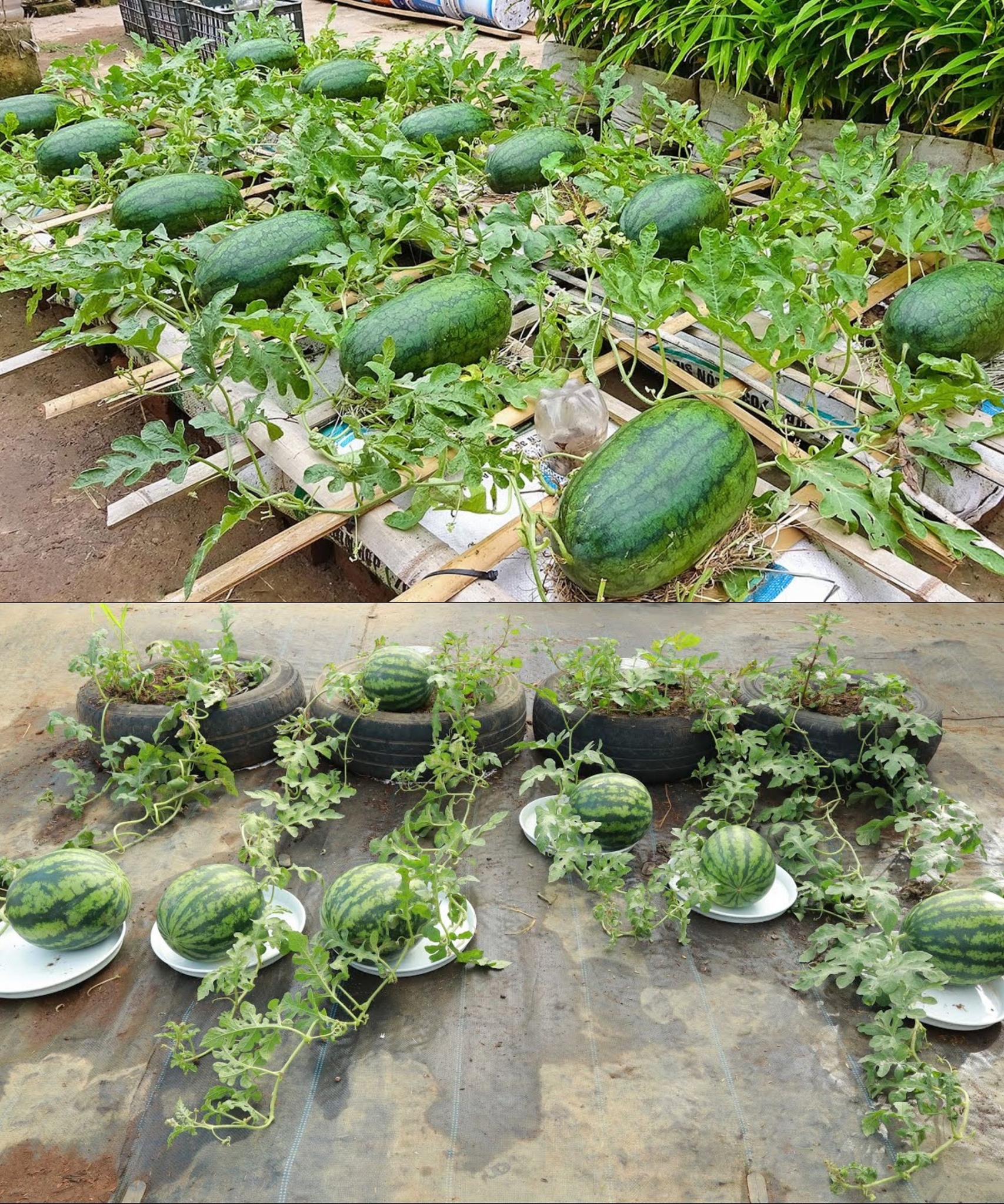
Growing sweet watermelons is a delightful and rewarding experience, especially during the summer months. Here’s a guide to help you cultivate delicious watermelons in your own garden:
Materials Needed:
- Watermelon Seeds:
- Choose high-quality seeds from a reliable source.
- Garden Space:
- Select a sunny location with well-draining soil.
- Compost or Organic Matter:
- Enhance soil fertility by incorporating compost or well-rotted manure.
- Mulch:
- Apply a layer of organic mulch to conserve moisture and suppress weeds.
- Fertilizer:
- Use a balanced fertilizer, especially high in potassium.
- Trellis (optional):
- For space-saving and supporting vines.
- Watering System:
- Provide consistent and deep watering.
Step-by-Step Guide:
- Selecting a Variety:
- Choose a watermelon variety suitable for your climate and garden space. Common varieties include “Sugar Baby” and “Crimson Sweet.”
- Soil Preparation:
- Watermelons prefer well-draining soil with a slightly acidic to neutral pH (6.0-7.0).
- Incorporate compost or well-rotted manure into the soil to improve fertility.
- Planting Seeds:
- Plant seeds directly in the garden or start them indoors in biodegradable pots, as watermelons do not transplant well.
- Plant seeds at a depth of 1 inch and space them about 2 feet apart.
- Germination and Transplanting:
- Watermelon seeds typically germinate in 4-12 days.
- Transplant seedlings once they have at least two sets of true leaves.
- Provide Support (optional):
- If space is limited, consider using a trellis to support the vines. Make sure it’s sturdy enough to hold the weight of developing watermelons.
- Watering:
- Water deeply to encourage deep root growth, especially during dry periods.
- Avoid overhead watering to prevent fungal diseases. Water at the base of the plants.
- Fertilization:
- Use a balanced fertilizer with an emphasis on potassium, which encourages fruit development.
- Apply fertilizer when vines begin to run and again when the first fruits set.
- Mulching:
- Apply a thick layer of organic mulch around the plants to conserve moisture, suppress weeds, and regulate soil temperature.
- Pruning and Training:
- Prune excess leaves to allow sunlight to reach the developing fruits.
- Train vines if using a trellis to prevent overcrowding.
- Harvesting:
- Harvest watermelons when the tendrils near the fruit start to dry, and the bottom side turns yellow.
- The sound of a dull thud when tapping the watermelon can also indicate ripeness.
Tips:
- Pollination: Watermelons require pollination for fruit development. Encourage pollinators like bees to visit your garden.
- Sunlight: Watermelons need plenty of sunlight for optimal growth and sweetness. Ensure they receive at least 6-8 hours of direct sunlight.
- Consistent Watering: Irregular watering can lead to issues like fruit cracking or poor flavor. Maintain consistent moisture throughout the growing season.
Growing sweet watermelons takes a bit of effort, but the satisfaction of enjoying juicy, home-grown melons makes it worthwhile. Happy gardening!
